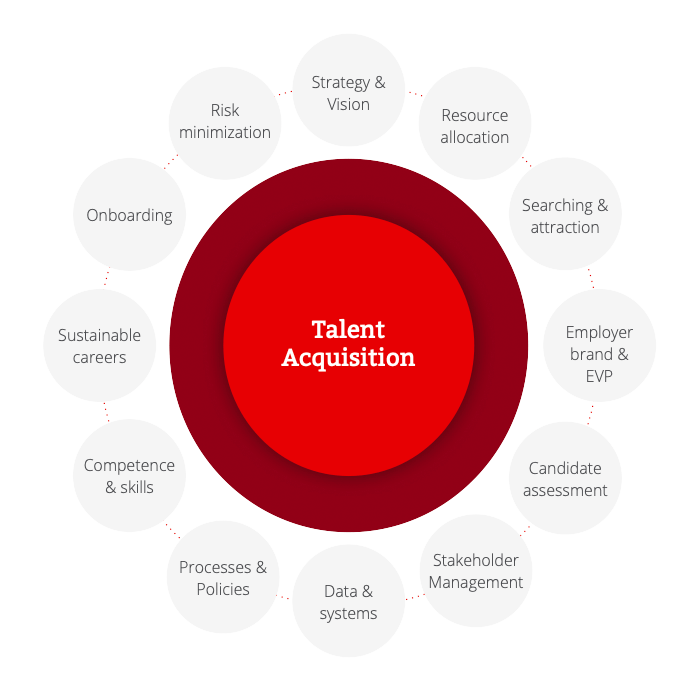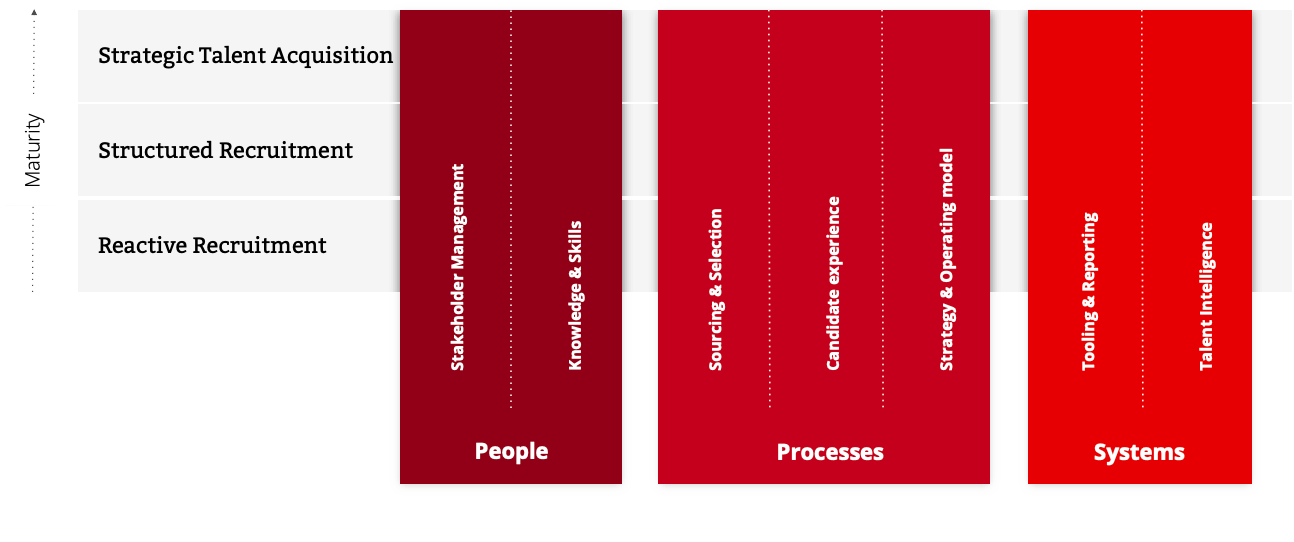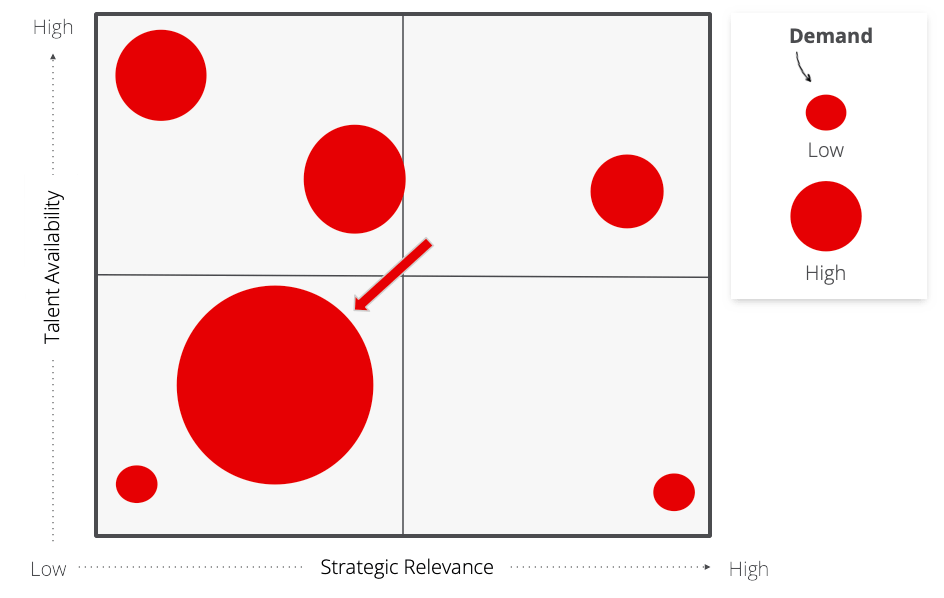Attracting and recruiting the right employees is more than just filling vacancies: it's an investment in your company’s future. Having the right talent impacts productivity, innovation, customer satisfaction, and financial performance. Yet talent acquisition is still often treated as a reactive, short-term task rather than a strategic priority.
- Recruitment is a reactive approach focusing on filling open positions, while strategic talent acquisition is a forward-thinking approach aimed at building a resilient workforce that aligns with business objectives
- Adopting the People, Process, and Systems (PPS) framework helps to blueprint the full scope of your talent acquisition strategy and identify improvement opportunities
- By mapping talent needs, you can translate your talent acquisition strategy to an efficient and effective recruitment approach
The webinar ‘From operational recruitment to strategic talent acquisition’ addressed the shift from a reactive to a proactive approach, breaking down silos and maximizing business impact. Our industry experts Ineke Vandael (Business Consultant TriHD) and Karolien Baeten (Business Manager TriHD) shared their valuable insights on how to make talent acquisition a strategic priority within your organization.
Understanding recruitment vs. talent acquisition
While recruitment and talent acquisition are often used interchangeably, they differ in scope and approach. Recruitment focuses on filling open positions by sourcing and screening candidates. It’s an immediate, reactive process aimed at addressing short-term needs.
On the other hand, talent acquisition is a broader, more strategic process that manages the entire employee lifecycle, from attracting and hiring talent to fostering long-term growth within the organization. Talent acquisition specialists are business partners to a variety of stakeholders in anticipating future needs and aligning recruitment efforts with the company’s long-term goals. This forward-thinking approach is essential for building a resilient workforce that aligns with business objectives.
Strategic talent acquisition is about planning and aligning talent needs with the organization’s future.
To move from operational to strategic talent acquisition, organizations must shift their mindset and go beyond traditional recruitment. We identified 12 key areas to consider in strategic talent acquisition:

To move from operational to strategic talent acquisition, organizations must shift their mindset.
Improving talent acquisition by focusing on people, processes and systems
At TriHD we opt for a practical way to enhance the efficiency and impact of talent acquisition, by adopting the proven People, Process, and Systems (PPS) framework:
1. People
- Stakeholder management: Hiring managers, senior leadership, HR teams, internal recruiters, external agencies, and candidates all play vital roles. Breaking down silos and establishing close relationships with these stakeholders ensures alignment between talent acquisition and broader organizational goals.
- Knowledge & skills: For talent acquisition teams to be effective, beyond recruitment expertise, they need broader HR knowledge and strong business skills. The ideal talent acquisition specialist is thus a T-shaped professional—someone with broad recruitment skills and in-depth knowledge of areas like compensation and rewards, organizational development, and business acumen.
2. Process
All processes within talent acquisition should enhance both the speed and quality of hiring practices. For instance, sourcing and selection encompass the entire journey from candidate search to funnel management, aiming to streamline operations and boost both the efficiency and effectiveness of hiring outcomes.
3. Systems
Finally, systems or technology play a crucial part. Tools like ATS, candidate relationship management systems for nurturing talent pools, pre-selection assessment tools, chatbots and the like should go hand in hand with the processes. On the one hand, it is impossible to drive the strategy without the necessary tech tools, but on the other hand, tools should never be implemented if not embedded in the strategy.
In addition, tools enable reporting on talent acquisition. They provide insights into key metrics, such as time-to-fill, cost-per-hire, and diversity, which help optimize recruitment strategies.
These insights will help to make data-driven decisions, thus enhancing the maturity of the talent acquisition strategy.

Obtaining the highest maturity level in every domain should not be an objective in itself. It’s crucial to tailor the strategy to your specific organization’s needs.
Mapping talent needs
Some organizations hire 5 niche profiles per year, some 100 and others 1.000.
Mapping your specific talent need and the way it will evolve in the future, is the first step in building a talent acquisition strategy. Talent mapping involves a detailed analysis of demand, talent availability, and the strategic relevance of each vacant role. Now and in the future.
To do this effectively, ask yourself these three key questions:
- How high is the demand for this role?
- What is the availability of talent that matches the required skillset?
- How strategically important is this role to the organization?
This analysis helps guide recruitment efforts. Roles with high strategic relevance but low talent availability might require specialized hiring approaches, whereas roles with lower strategic importance and high availability can be filled through standard hiring practices. The magic is in the mix.
The benefits of talent mapping
Picture you working in a manufacturing company and needing to hire 100 technicians. Mapping demand, availability and strategic importance quickly reveals that this is a so-called difficult mass hiring. You need to recruit a high volume of candidates who possess a specific set of skills or expertise, though they may not need to be industry experts.
To attract these scarce talents to your company anyway, you can use these best practices in talent acquisition for bottleneck occupations:
- Targeted employer branding: Invest in branding that appeals directly to the specific target group, ensuring alignment with what candidates value most.
- Employee referral programs: Encourage employees to refer potential candidates, which often leads to higher job acceptance rates and more cost-effective hiring.
- Excellence in candidate journey: Focus on creating a personalized and seamless recruitment process, by identifying ‘moments that matter’ in your candidate’s journey.
- Building a continuous talent pipeline: Engage with potential candidates early, even before roles are open, and invest in building long-term relationships. Actively network and foster connections with key talent communities, both online and offline.
- Make processes agile: Use methods like sprint recruiting to adapt quickly to talent availability, market fluctuations and seasonality.

Making talent acquisition a strategic priority within your organization
All of this makes it clear that talent acquisition is a broad field of expertise that should be viewed as an end-to-end process. Its strong connection with various business processes and the wide range of stakeholders involved make it challenging to create a 360 degree overview and identify areas for improvement. This is where our Talent Acquisition Scan can provide guidance. The scan offers a pragmatic roadmap for process improvement.
The Talent Acquisition Scan starts by mapping the current situation through a survey and in-depth interviews with all relevant stakeholders. This enables a fit-gap analysis of the future state. We can assist you in implementing the redesigned process, offering training and support to all stakeholders involved.
Related content
-
Podcast
Podcast: Skills-based employee volunteering
-
Reference case
DSM Keukens partnered with TriHD for a flexible HR solution in payroll and beyond
-
Reference case
From growing pains to growth paths: supporting nonprofit Capital with HR expertise
-
Reference case
A blend of (new) Payroll challenges for Indy at iO
-
Blog
Should L&D professionals be subject matter experts?
-
Blog
Should L&D experts put more effort into measuring ROI?